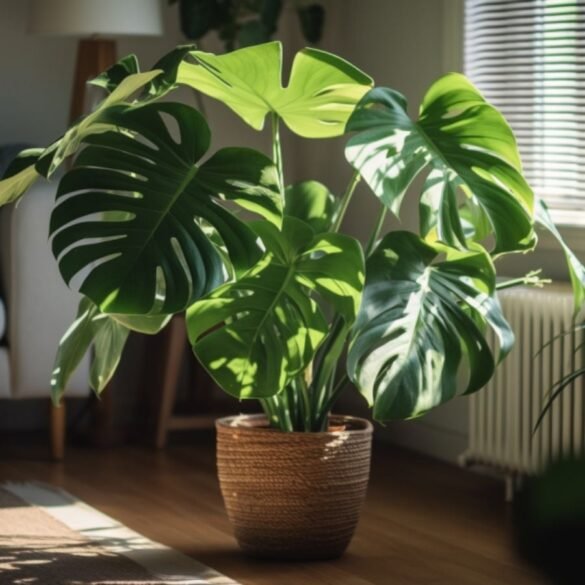Your Monstera might be having a hard time hiding beneath the soil right now. Root issues are actually the main cause of houseplant deaths, but they usually go unnoticed until the damage is done.
That yellow leaf you’re seeing isn’t random. It’s your plant letting you know something’s wrong.
Your Monstera Might Be Drowning
Those pretty split leaves can look perfectly fine while the roots underneath are struggling. Root rot can develop quickly in these tropical plants, and it can be hard to catch early.
The most important thing for your Monstera isn’t more attention. It’s the right kind of care. Let’s figure out what’s actually causing the problem so you can fix it.

Why Your Monstera’s Roots Are Turning to Mush
Your plant is usually trying to tell you one of three things: it’s getting too much water, it’s too cold, or pests are attacking it.
Here’s what to look for:
1. Overwatering
This is the most common mistake people make with Monstera. Too much water means the roots can’t get oxygen. They basically suffocate.
The fix: Let the top 1-2 inches of soil dry out between waterings. For most homes, watering every 2-3 days works well. Your plant actually needs some time to dry.
2. Cold Exposure
Monstera come from tropical climates, so they don’t handle cold well. Even a few days below 50°F can damage the roots before you see any signs in the leaves.
The fix: Water less when temperatures drop. If it gets really cold, wrap the pot in bubble wrap and cover the leaves with a breathable fabric at night. This helps protect the plant from temperature shock.
3. Pest Damage
Root rot sometimes starts with tiny pests you can’t easily see. Root aphids, mealybugs, and spider mites can damage roots and introduce fungal infections.
The fix: Neem oil works well for this. Mix 1 tablespoon with 1 gallon of water, then spray your plant every 1-2 weeks. It repels pests and helps fight the fungi and bacteria that cause root decay.
How to Save a Rotting Monstera
If you’re seeing yellow leaves, smelling something off from the soil, or the plant feels wobbly in its pot, here’s what to do:
• Check the roots – Take the plant out of its pot and look at the roots. Healthy ones are firm and white or light tan. Black, mushy roots need to be removed.


• Cut away damaged roots – Use clean scissors to trim off all the rotted parts. Remove everything that’s damaged. Ut can’t recover and will just spread the problem.
• Repot in fresh soil – Use new, well-draining soil mixed with perlite or orchid bark. This helps the roots get the oxygen they need.
• Give it time to recover – Put it in bright, indirect light and go easy on the water. You should see new growth in 2-4 weeks if you catch the problem early enough.
How to Prevent Root Rot
Honestly, saving a plant from root rot is stressful. Prevention is much easier. Here’s what matters most:
• Always use pots with drainage holes
• Mix 30% perlite, orchid bark, or coconut coir into your potting soil
• Check if the soil is dry 1-2 inches down before watering
• Keep temperatures between 65-85°F
• Look for pests once a month


With these basic steps, you’ll spend a lot more time enjoying your plant and a lot less time worrying about it. Your Monstera doesn’t need anything fancy. Just consistent care that works with how it naturally grows.

